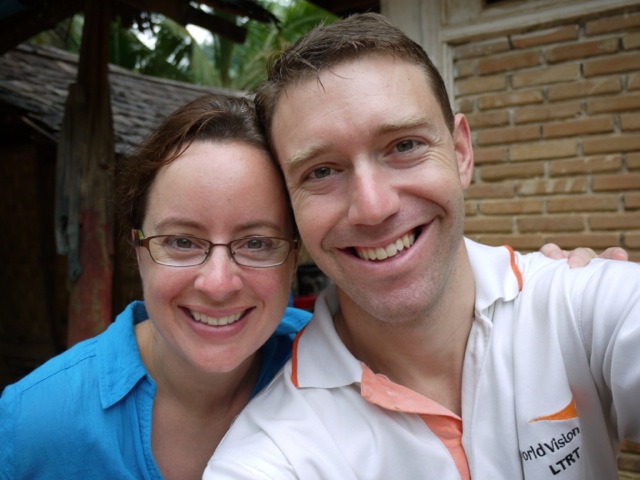I wrote this essay a month after we arrived in Laos, way back in 2010. It was bought that same year by Notre Dame Magazine. They finally printed it in their spring 2013 issue, which came out just a week before I left Luang Prabang. The piece was originally titled The Hungry Months and the editors renamed it Intestinal Fortitude. I’ve included the beginning here for you (to read the whole piece jump on over to Notre Dame Magazine).
Below the excerpt I’ve added some photos from that trip to Viengkham. Looking at those shots now is a bit surreal. It hasn’t yet been three years since this trip. It feels longer. It looks longer :).
***
Three weeks after I arrived in my new hometown of Luang Prabang, Laos, with my newish husband, Mike, we traveled to the district of Viengkham to witness a handover ceremony for a gravity-fed water system in a remote village.
Mike hadn’t warned me how basic our guesthouse accommodations would be, and he smiled as he watched me take in the lack of hot water, dirty squat toilet and lumpy bed covered with one filthy blanket.
“Do you love me?” he asked.
“I should think that the answer to that question would be perfectly obvious,” I replied, “considering that I am here, with you. But just in case there’s any doubt, then, yes. I love you.”
This trip to Viengkham was my introduction to life outside the tourist mecca of Luang Prabang, and it didn’t take too long after leaving town before I started to see a little more of what the development statistics for Laos really mean when they make bland pronouncements, such as: 27 percent of the population here lives on less than $1 a day. Or, 67 percent of the population is rural. Or, more than 40 percent of the rural children under age 5 are undernourished.
It is five hours by land cruiser up to the community we are visiting, and the road twists through village after village of flimsy bamboo huts. Landslides block half the road in a couple of places, sections are unpaved, and we frequently have to slow to avoid flattening the chickens, ducks, pigs, water buffaloes, cows, dogs and little kids making use of the only paved surface nearby. The thick lace of trees covering the mountains is patched by slash-and-burn fields — rice, growing on the slopes at impossible angles. Everything looks fertile and fecund — the glowing rice fields, the coppery swamp of red dirt souped up by the rains, the greedy green clinging to the slopes.
But these months, while everything is busy growing so furiously, these are the hungry months …
to read the rest of this essay click on over to Notre Dame Magazine










